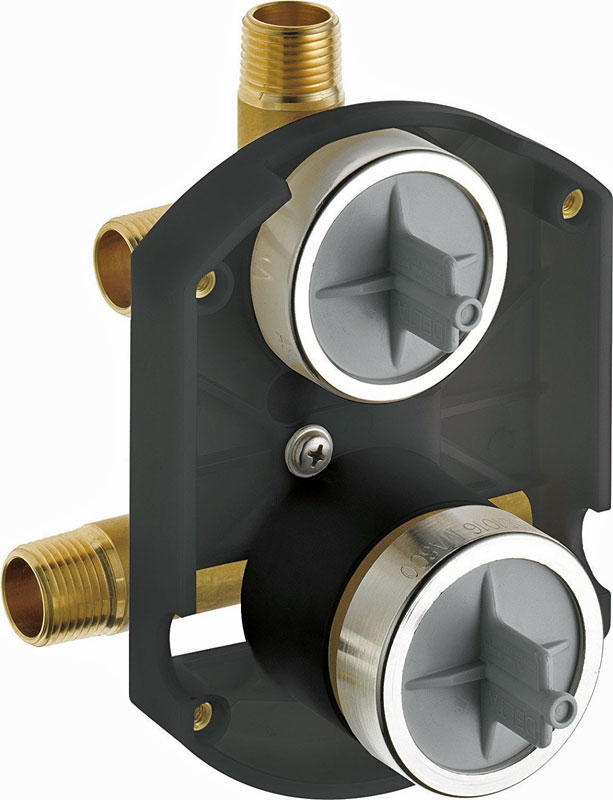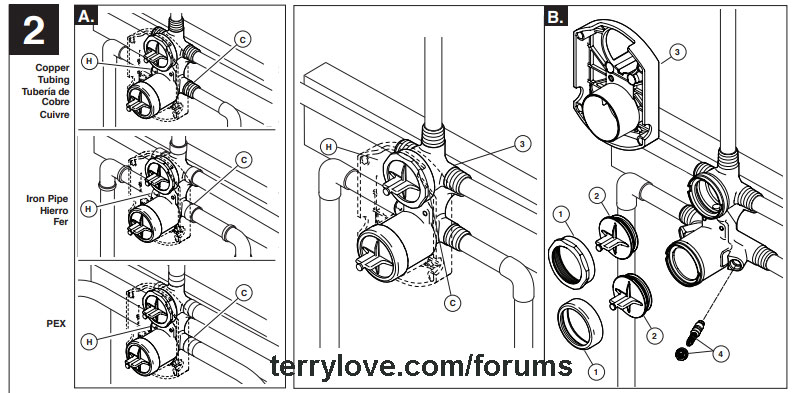Justin Thomas
New Member
Looking for advice before I spend any more money.
I recently remodeled my upstairs bathroom. Put in a 1 piece shower with a rainfall water head and traditional wall shower head. The valve is a Delta R22000 Multichoice rough in. I notice that when both shower heads are used , the wall shower pressure isn’t acceptable. Took a reading outside at the hose, and pressure read at 42 PSI. (City water for my neighborhood should be around 49 PSI) A local plumber recommended putting in a booster pump. Seems excessive to me. 1-1/4” galvanized main to 3/4” PEX to Viega manabloc to 1/2” runs to upstairs bath. I was considering putting a Tee directly off the hot water heater and running 3/4” PEX hot to the shower valve directly. Or, Possibly bypass the manabloc, tee off the hot water heater and reduce to 1/2” line from the hot water heater?
I guess my question is :
Will increasing PEX from 1/2” to 3/4” increase pressure to the shower ?
Regards,
-J.


I recently remodeled my upstairs bathroom. Put in a 1 piece shower with a rainfall water head and traditional wall shower head. The valve is a Delta R22000 Multichoice rough in. I notice that when both shower heads are used , the wall shower pressure isn’t acceptable. Took a reading outside at the hose, and pressure read at 42 PSI. (City water for my neighborhood should be around 49 PSI) A local plumber recommended putting in a booster pump. Seems excessive to me. 1-1/4” galvanized main to 3/4” PEX to Viega manabloc to 1/2” runs to upstairs bath. I was considering putting a Tee directly off the hot water heater and running 3/4” PEX hot to the shower valve directly. Or, Possibly bypass the manabloc, tee off the hot water heater and reduce to 1/2” line from the hot water heater?
I guess my question is :
Will increasing PEX from 1/2” to 3/4” increase pressure to the shower ?
Regards,
-J.


Last edited by a moderator:
